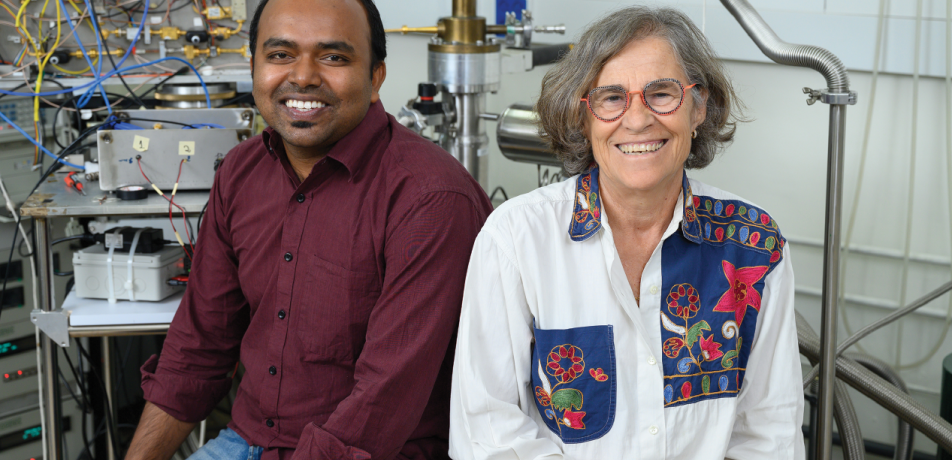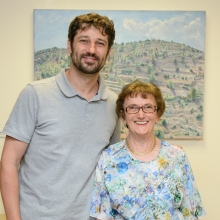Life’s mysteries in a droplet
Briefs

Dr. Manas Seal and Prof. Daniella Goldfarb
Seeking to address this question, scientists in the Department of Biomolecular Sciences lab of the late Prof. Dan Tawfik (z”l), together with colleagues, mathematically reconstructed a possible long-lost ancestor of modern proteins. In their model, this ancestor consisted of two small protein segments, or peptides, with nearly identical sequences of amino acids—a peptide “word” repeated twice to make a simple protein “phrase.” This repetition suggested that some of the first proteins might have been created through the pairing of amino acid sequences.
To reproduce this process in the lab, the scientists synthesized their hypothetical ancestor protein, cut it in two, and then placed the resulting peptide “words” in water. They could find no sign of the words assembling into pairs, but when Dr. Liam Longo, then a postdoctoral fellow in the Tawfik lab, added to the mix a certain amount of RNA— which may have been a dominant molecule in the pre-life world—the water suddenly turned cloudy. Under the microscope, the researchers saw that the positively charged peptides had condensed into droplets as they combined with the negatively charged RNA.
In fact, just over a decade ago, scientists discovered that similar droplets are naturally present inside cells. Although the discovery was described as “one of the hottest topics in cell biology,” much remains unknown about the mechanisms by which these droplets form and what purposes they serve in cells.
Prof. Tawfik had studied peptide-RNA droplets to see whether they might have played a role in the origin of proteins, but it was clear that this research could also shed new light on the roles similar droplets play today in the human body. He and his colleagues hypothesized that in the pre-life world, the peptide-RNA droplets formed in the primordial soup may have served as protocells, forerunners of modern living cells. The droplets would have created a kind of compartment, bringing peptides closer together from their isolation in the vast, dilute soup, thereby enabling them to selfassemble into dual structures called dimers: pairs of peptide molecules drawn to one another by molecular forces. A dimer might later fuse into a single molecule, creating an ancestral two-word protein akin to the one reconstructed by the scientists.
To find evidence for the existence of such dimers, the Tawfik group teamed up with Prof. Daniella Goldfarb of the Department of Chemical and Biological Physics, who studies the structure and dynamics of proteins using electron paramagnetic resonance.
The Goldfarb lab hunted for dimers by tagging the peptides with spin labels, tiny molecules having special magnetic properties. When the scientists performed an experiment called double electronelectron resonance, they could tell how far the peptides were from one another by picking up on certain magnetic interactions between the tags.
About halfway through the search, tragedy struck. On May 4, 2021, Prof. Tawfik fell to his death in a rock-climbing accident in Croatia. With uncanny timing, the following day, Dr. Manas Seal, a postdoctoral fellow in the Goldfarb lab, managed to find dimers in a peptide solution. The findings were published in the Journal of the American Chemical Society, together with a moving tribute to Prof. Tawfik. The findings suggest that in the ancient past, droplets might have been crucibles for a critical step in protein evolution, enabling the transition from short peptides to longer proteins that fold into intricate structures for performing biological functions. These insights might also prove relevant for understanding what happens inside the droplets that are involved in a variety of fundamental cellular processes in both the healthy and the diseased human body.








